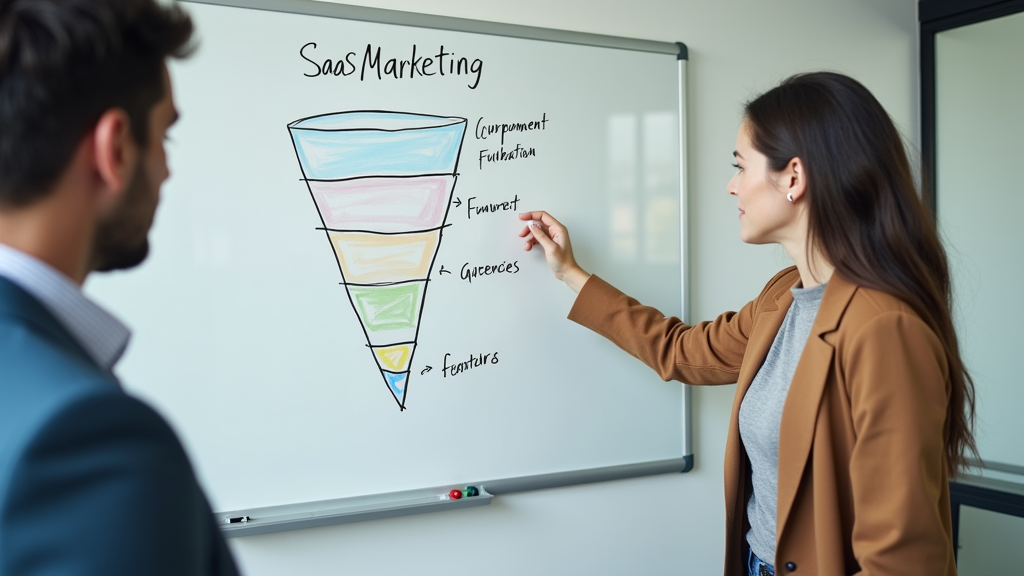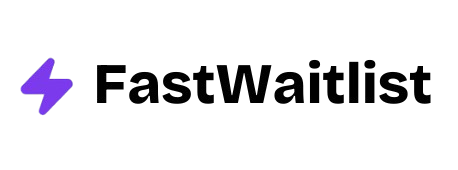
In the world of Software as a Service (SaaS), standing out from the crowd is crucial. Inbound marketing has become a key strategy for SaaS companies looking to attract, convert, and retain customers. This comprehensive guide will walk you through the essentials of inbound marketing for SaaS, providing actionable insights to help your business grow.
Understanding Inbound Marketing for SaaS
Inbound marketing is a customer-centric approach that focuses on creating valuable content and experiences tailored to your audience. Unlike traditional outbound marketing, which interrupts potential customers with ads, inbound marketing attracts them by providing solutions to their problems.
The SaaS Marketing Funnel
The SaaS marketing funnel is a model that represents the journey a potential customer takes from first becoming aware of your product to becoming a loyal advocate. It consists of four main stages:
-
Awareness: Potential customers become aware of your SaaS product and the problem it solves.
-
Consideration: They evaluate your solution along with alternatives.
-
Decision: The prospect chooses to try or buy your SaaS product.
-
Retention: Customers continue to use and renew their subscription, potentially becoming advocates.
Understanding this funnel is crucial for creating targeted content and strategies that guide prospects through each stage.
Benefits of Inbound Marketing for SaaS Companies
Inbound marketing offers several advantages for SaaS businesses:
-
Cost-effective lead generation: By creating valuable content, you attract qualified leads without the high costs associated with traditional advertising.
-
Higher quality leads: Inbound leads are often more engaged and better aligned with your product, as they've actively sought out your content.
-
Improved customer retention: Ongoing valuable content helps keep existing customers engaged and reduces churn.
-
Scalable growth: Once created, your content continues to work for you, attracting leads over time without additional investment.
Developing a Strong Foundation
Before diving into tactics, it's essential to lay a solid foundation for your inbound marketing strategy.
Creating Detailed Buyer Personas
Buyer personas are fictional representations of your ideal customers. They help you understand your target audience's needs, challenges, and motivations. To create effective buyer personas:
-
Research your target audience through surveys, interviews, and data analysis.
-
Identify common pain points and goals.
-
Create detailed profiles including demographics, job roles, and preferred communication channels.
Remember, personas aren't static. Regularly update them as you gather more customer insights.
Crafting a Compelling Value Proposition
Your value proposition should clearly communicate how your SaaS product solves customer problems better than alternatives. It should be:
-
Clear and concise
-
Focused on customer benefits
-
Unique to your product
Test your value proposition with real customers and refine it based on their feedback.
Establishing SMART Marketing Goals
Set Specific, Measurable, Achievable, Relevant, and Time-bound (SMART) goals for your inbound marketing efforts. For example:
"Increase organic traffic to our website by 50% within the next six months."
These goals will guide your strategy and help you measure success.
Selecting the Right Marketing Technology Stack
Choose tools that support your inbound marketing efforts. Essential tools might include:
-
Customer Relationship Management (CRM) software like Salesforce or HubSpot
-
Email marketing platforms such as Mailchimp or ConvertKit
-
Analytics tools like Google Analytics
Select tools that integrate well with each other to streamline your workflows.
Content Creation and Optimization
Content is the cornerstone of inbound marketing. It's how you attract, engage, and delight your audience throughout their journey.
Developing a Content Strategy
Your content strategy should align with the different stages of the buyer's journey:
-
Awareness stage: Create educational content that addresses common problems your audience faces.
-
Consideration stage: Provide content that showcases how your SaaS solution solves these problems.
-
Decision stage: Offer detailed product information, case studies, and comparisons.
-
Retention stage: Develop content that helps customers get the most out of your product.
Content types for SaaS might include blog posts, whitepapers, case studies, webinars, and video tutorials.
SEO Best Practices for SaaS
Search Engine Optimization (SEO) is crucial for making your content discoverable. Here are some key practices:
-
Keyword research and optimization: Use tools like Ahrefs or SEMrush to find relevant keywords. Include these naturally in your content, titles, and meta descriptions.
-
On-page SEO techniques: Optimize your content structure with clear headings, use internal linking, and include alt text for images.
-
Technical SEO considerations: Ensure your website is mobile-friendly, loads quickly, and has a clear site structure.
Creating Lead Magnets and Gated Content
Lead magnets are valuable resources offered in exchange for contact information. They can be:
-
Ebooks or whitepapers
-
Free trials or demos
-
Webinars or video courses
Make sure your lead magnets provide real value and are closely related to your SaaS offering.

Repurposing Content Across Multiple Channels
Get more mileage out of your content by repurposing it for different platforms:
-
Turn blog posts into infographics or social media posts
-
Convert webinars into blog posts or podcast episodes
-
Use sections of whitepapers as standalone articles
This approach helps you reach a wider audience and reinforces your message across multiple touchpoints.
Leveraging Social Media for SaaS Inbound Marketing
Social media is a powerful tool for SaaS companies to engage with their audience and build brand awareness.
Choosing the Right Social Platforms for Your Audience
Not all social platforms are equally effective for SaaS marketing. Consider where your target audience spends their time:
-
LinkedIn is often effective for B2B SaaS
-
Twitter can be great for real-time engagement and customer support
-
Facebook and Instagram might be more suitable for B2C SaaS products
Focus your efforts on the platforms that align best with your buyer personas.
Developing a Social Media Content Calendar
A content calendar helps you maintain a consistent presence on social media. It should include:
-
A mix of promotional and value-adding content
-
Relevant industry news and trends
-
User-generated content and testimonials
-
Behind-the-scenes glimpses of your company culture
Use tools like Trello or Asana to plan and collaborate on your content calendar.
Engaging with Your Audience and Building Community
Social media isn't just for broadcasting messages. Engage with your audience by:
-
Responding promptly to comments and messages
-
Hosting Q&A sessions or AMAs (Ask Me Anything)
-
Creating and moderating groups or forums related to your niche
-
Showcasing customer success stories
Building a community around your brand can lead to increased loyalty and word-of-mouth marketing.
Paid Social Media Advertising Strategies for SaaS
While organic reach is valuable, paid advertising can help you scale your efforts. Consider:
-
Retargeting ads to reach people who've visited your website
-
Lookalike audience targeting to find new prospects similar to your existing customers
-
Sponsored content to boost visibility of your best-performing posts
Start with small budgets and test different ad formats and targeting options to find what works best for your audience.
Email Marketing Strategies for SaaS
Email remains one of the most effective channels for nurturing leads and retaining customers in the SaaS industry.
Building and Segmenting Your Email List
Start by creating multiple opportunities for visitors to join your email list:
-
Exit-intent popups
-
Content upgrade offers within blog posts
-
Webinar registrations
-
Free trial signups
Once you have subscribers, segment your list based on factors like:
-
Stage in the buyer's journey
-
Product interest
-
Engagement level
-
Company size or industry (for B2B SaaS)
Segmentation allows you to send more targeted, relevant emails, improving open rates and conversions.
Crafting Effective Email Campaigns
Different types of email campaigns serve different purposes:
-
Welcome series: Introduce new subscribers to your brand and product.
-
Nurture sequences: Provide value and gradually move leads towards a purchase decision.
-
Retention and upsell campaigns: Keep existing customers engaged and introduce them to additional features or plans.
For each campaign, focus on providing value rather than just selling. Share tips, industry insights, and success stories alongside your product information.
Personalization and Automation Techniques
Personalization goes beyond using a subscriber's name. Use data from your CRM to tailor emails based on:
-
Past interactions with your content
-
Product usage patterns
-
Specific pain points or goals
Automation tools like Drip or ActiveCampaign can help you set up triggered emails based on user behavior, ensuring timely and relevant communication.
Measuring Email Marketing Success
Track key metrics to continually improve your email marketing:
-
Open rates: Indicate the effectiveness of your subject lines
-
Click-through rates: Show how engaging your content is
-
Conversion rates: Measure the impact on your bottom line
Regularly analyze these metrics and A/B test different elements of your emails to optimize performance.
Lead Generation and Conversion Optimization
Generating and converting leads is crucial for SaaS growth. Here's how to optimize your process:
Implementing Effective Lead Capture Forms
Your lead capture forms should be:
-
Short and focused (ask only for essential information)
-
Clearly labeled and easy to fill out
-
Mobile-friendly
-
Placed strategically on your website
Consider using multi-step forms for longer surveys, as they can increase completion rates.
Creating High-Converting Landing Pages
Landing pages should be focused on a single offer or call-to-action (CTA). Key elements include:
-
A compelling headline that addresses the visitor's pain point
-
Clear benefits of your offer
-
Social proof (testimonials, case studies, or trust badges)
-
A prominent CTA button
Remove navigation menus and other distractions to keep visitors focused on the offer.
Utilizing Chatbots and Live Chat for Lead Qualification
Chatbots can help qualify leads 24/7 by asking key questions and providing instant responses. Use them to:
-
Guide visitors to relevant resources
-
Schedule demos or calls with sales reps
-
Answer frequently asked questions
For more complex inquiries, offer live chat support during business hours to provide a personal touch.
A/B Testing Strategies for Continuous Improvement
Regularly test different elements of your website and marketing materials:
-
CTA button colors and text
-
Landing page layouts
-
Email subject lines and content
-
Ad copy and images
Use tools like Optimizely or Google Optimize to run these tests and analyze results.
Implementing Lead Scoring and Nurturing Processes
Not all leads are created equal. Use lead scoring to prioritize your efforts:
-
Assign points based on demographics, behavior, and engagement
-
Set thresholds for marketing qualified leads (MQLs) and sales qualified leads (SQLs)
-
Automate lead nurturing workflows based on scores
This ensures your sales team focuses on the most promising leads while others continue to be nurtured through marketing efforts.

Customer Retention and Advocacy
In the SaaS world, customer retention is just as important as acquisition. Happy customers can become your best marketers.
Developing a Customer Onboarding Process
A smooth onboarding experience sets the stage for long-term customer success. Consider:
-
Creating a welcome email series with getting started guides
-
Offering interactive product tours
-
Providing personalized onboarding calls for high-tier customers
-
Setting up automated check-ins to ensure customers are making progress
The goal is to help customers achieve their first "win" with your product as quickly as possible.
Creating a Knowledge Base and Self-Service Resources
Empower your customers to find answers on their own:
-
Develop a comprehensive FAQ section
-
Create video tutorials for common tasks
-
Maintain an up-to-date knowledge base with searchable articles
-
Offer a community forum where users can help each other
Self-service options reduce support costs and improve customer satisfaction.
Implementing a Customer Feedback Loop
Regularly solicit and act on customer feedback:
-
Send NPS (Net Promoter Score) surveys
-
Conduct quarterly business reviews with key accounts
-
Monitor social media and review sites for mentions of your product
-
Create a product roadmap influenced by customer suggestions
Show customers that their input is valued by communicating how their feedback is being used.
Building a Customer Loyalty Program
Reward your most engaged customers:
-
Offer exclusive features or content to long-term subscribers
-
Provide early access to new features for loyal customers
-
Create a tiered rewards system based on product usage or referrals
-
Host special events or webinars for your top customers
A loyalty program can increase retention and encourage customers to explore more of your product's features.
Encouraging User-Generated Content and Testimonials
Turn satisfied customers into brand advocates:
-
Feature customer success stories on your website and social media
-
Encourage customers to leave reviews on platforms like G2 or Capterra
-
Create a hashtag for customers to share their experiences on social media
-
Offer incentives for referrals or case study participation
User-generated content provides social proof and can be more convincing than your own marketing messages.
Measuring and Analyzing Inbound Marketing Success
To improve your inbound marketing efforts, you need to measure their impact consistently.
Key Performance Indicators (KPIs) for SaaS Inbound Marketing
Track these essential metrics:
-
Customer Acquisition Cost (CAC)
-
Customer Lifetime Value (CLV)
-
Monthly Recurring Revenue (MRR)
-
Churn rate
-
Conversion rates at each stage of the funnel
-
Organic traffic and search rankings
-
Email engagement rates
Focus on KPIs that align with your specific business goals and stage of growth.
Setting Up Analytics and Tracking Tools
Implement a robust analytics setup:
-
Use Google Analytics for website traffic and behavior analysis
-
Set up goal tracking for key conversions
-
Implement event tracking for important user actions
-
Use tools like Mixpanel or Amplitude for product usage analytics
Ensure all your marketing tools are properly integrated to provide a complete view of the customer journey.
Creating Regular Performance Reports
Develop a reporting routine:
-
Create weekly dashboards for quick performance checks
-
Prepare monthly in-depth reports analyzing trends and insights
-
Conduct quarterly reviews to assess progress towards annual goals
Use data visualization tools like Tableau or Google Data Studio to make your reports more accessible and actionable.
Using Data to Inform Strategy Adjustments
Let data guide your decision-making:
-
Identify top-performing content and channels to double down on
-
Spot underperforming areas that need improvement or retirement
-
Use cohort analysis to understand long-term customer behavior
-
Test new ideas based on data-driven hypotheses
Remember, data should inform your strategy, not dictate it entirely. Always consider qualitative feedback alongside quantitative data.
By following these inbound marketing strategies, SaaS companies can attract more qualified leads, convert them into customers, and build long-lasting relationships. Remember that inbound marketing is an ongoing process of learning and optimization. Stay patient, be consistent, and always focus on providing value to your audience. With time and effort, you'll see your SaaS business grow through the power of inbound marketing.
